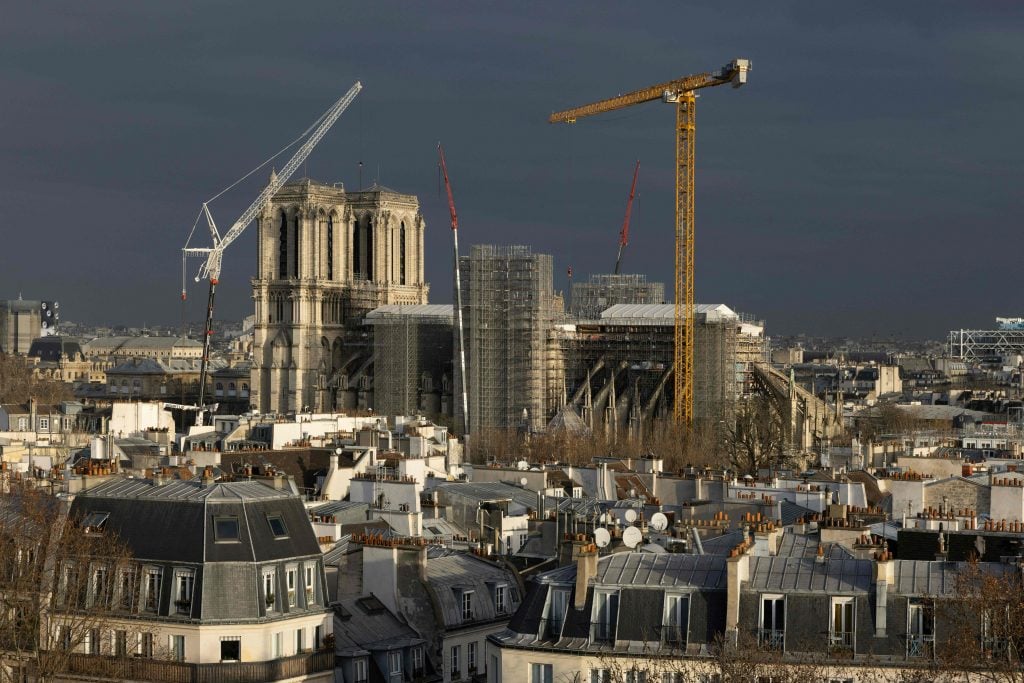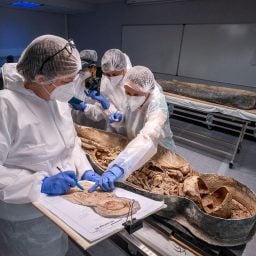Paris’s Notre Dame Cathedral is on track to reopen to worshippers and tourists in 2024—but not in time for that year’s Summer Olympics, as originally hoped.
In the wake of the fire that nearly destroyed the historic cathedral on April 15, 2019, President Emmanuel Macron had vowed to rebuild the landmark in time for the Paris games.
That goal was always ambitious, and became even more so after pandemic lockdown restrictions meant work ground to a halt for much of 2020. (Concerns about lead pollution also slowed work.) It took two years just to stabilize and reinforce the structure—which was at risk of collapse—before reconstruction could begin in earnest.
“My job is to be ready to open this cathedral in 2024. And we will do it,” Jean-Louis Georgelin, who is overseeing the reconstruction efforts, told the Associated Press. “We are fighting every day for that and we are on a good path.”
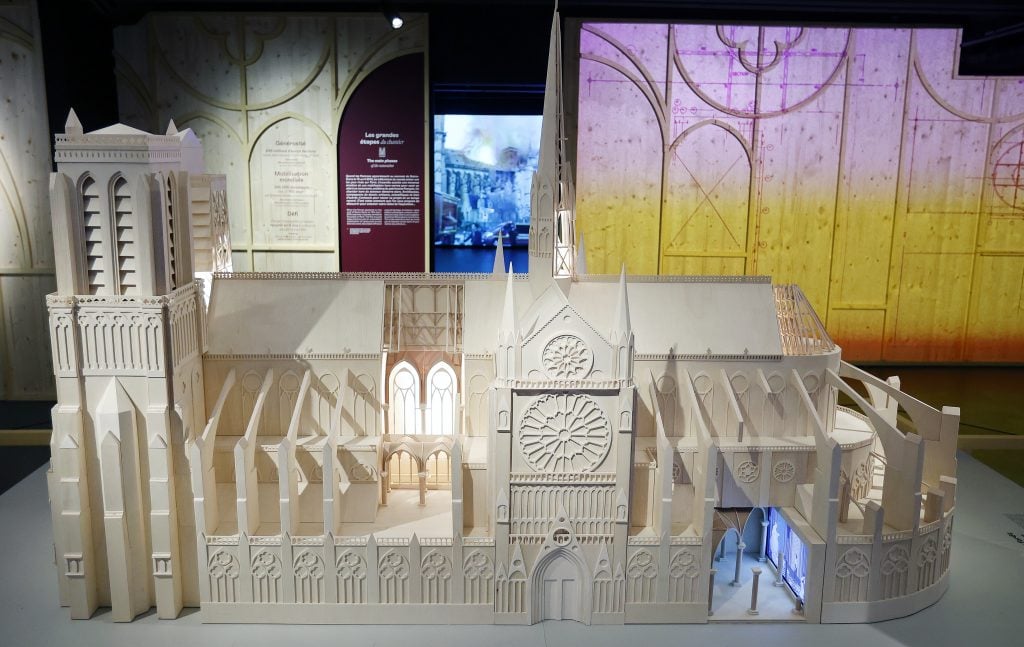
A wooden model of Notre Dame cathedral on view in “Notre Dame de Paris: at the heart of the construction site,” a new underground exhibition in the forecourt of the cathedral. Photo by Thierry Chesnot/Getty Images.
But as recently as last July, the €846 million ($865 million) project appeared to be on track to begin welcoming visitors in summer 2024.
Now, it seems that travelers planning to attend next year’s Olympics will have to make a return visit if they wish to enter the famed church. (And even after Notre Dame reopens in late 2024, work on the site is expected to continue into 2025.)
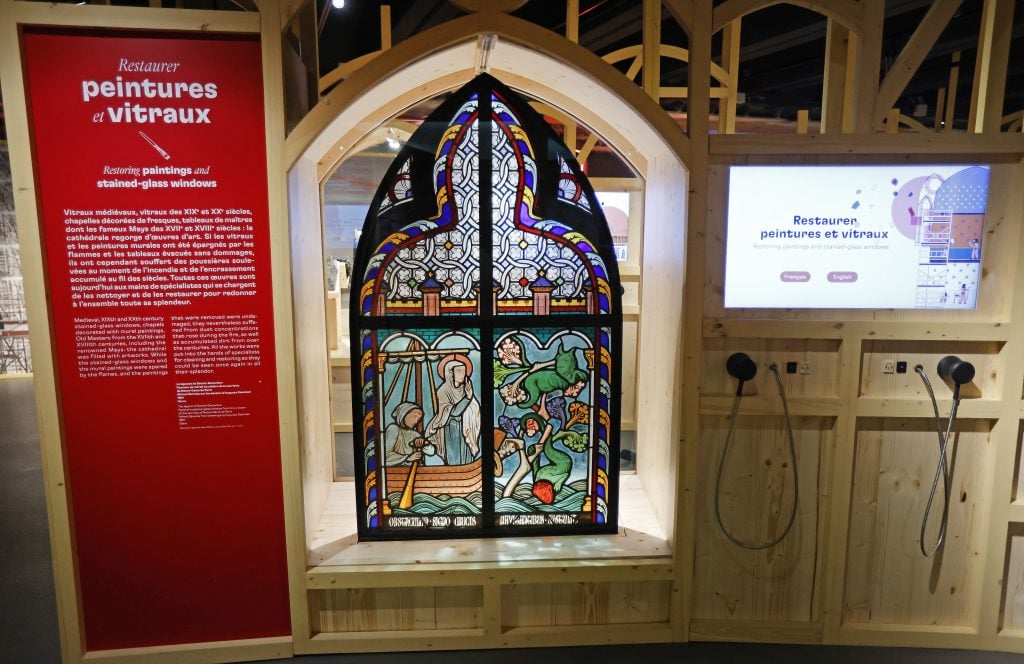
The legend of Sainte-Genevieve Panel of a stained-glass window from the cloister of the sacristy of Notre-Dame cathedral on display in “Notre-Dame de Paris: at the heart of the construction site,” a new underground exhibition in the forecourt of the cathedral. Photo by Thierry Chesnot/Getty Images.
But while the church remains closed, today marks the opening of the new exhibition “Notre-Dame de Paris: At the Heart of the Construction Site,” staged in an underground space outside the cathedral.
The attraction is free of charge, unless visitors want to purchase a ticket for a virtual reality show on the history of Notre Dame.
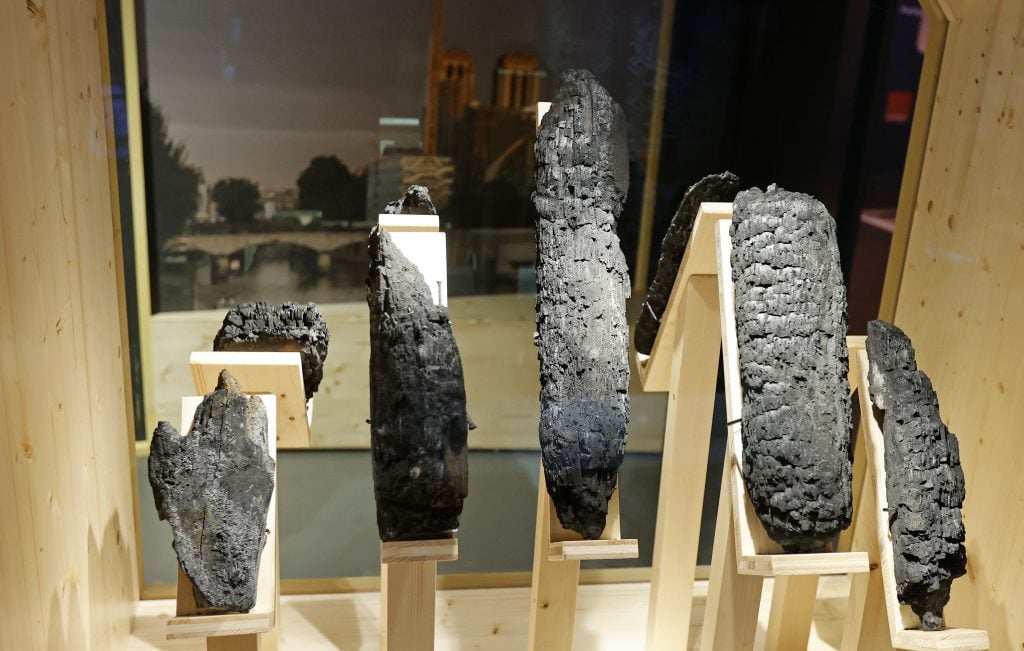
Remnants of charred wood from Notre Dame cathedral are displayed during “Notre Dame de Paris: at the heart of the construction site,” a new underground exhibition in the forecourt of the cathedral. Photo by Thierry Chesnot/Getty Images.
The rest of the show gives viewers a glimpse into the ongoing work to reopen the cathedral. Some displays illustrate the devastating effects of the fire, such as a display of charred roof timbers and led ornaments melted by the intense heat of the blaze. The exhibition also celebrates the expertise and skills of workers bringing the church back to life, providing details about how the restoration is being carried out.
Stained glass windows and other artworks from the cathedral are on view alongside a scale model of Notre Dame, as well as part of the church’s massive pipe organ. The instrument needed to be disassembled and cleaned; putting the 8,000 pipes back together is expected to take a full year.
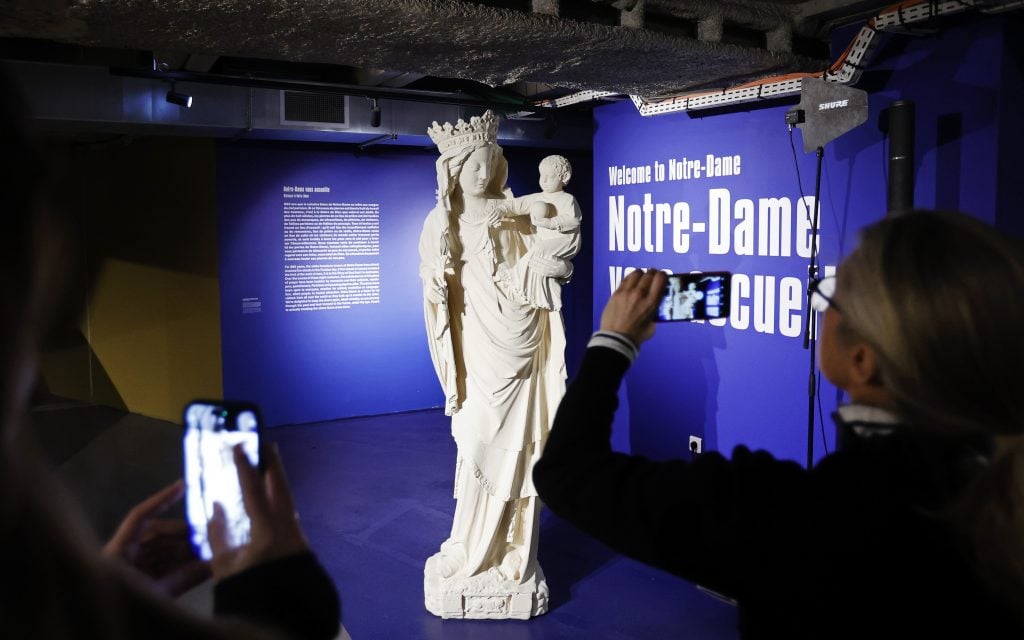
The best-know of the thirty seven representations of the Virgin Mary at Notre Dame cathedral on view in “Notre Dame de Paris: at the heart of the construction site,” a new underground exhibition in the forecourt of the cathedral. Photo by Thierry Chesnot/Getty Images.
As reconstruction work continues, French officials also anticipate beginning to rebuild the church’s rooftop spire, which collapsed during the blaze, later this year.
“The return of the spire in Paris’s sky will in my opinion be the symbol that we are winning the battle of Notre Dame,” Georgelin said.
Following the fire, the question of how to rebuild the spire became the subject of a spirited debate. The spire as it stood before the blaze was the work of architect Eugène Viollet-le-Duc, who oversaw an 1844 restoration at Notre Dame, and created many of the well-known sculptural details on the 13th-century cathedral’s exterior, including gargoyles that serve as drain pipes and decorative grotesques.
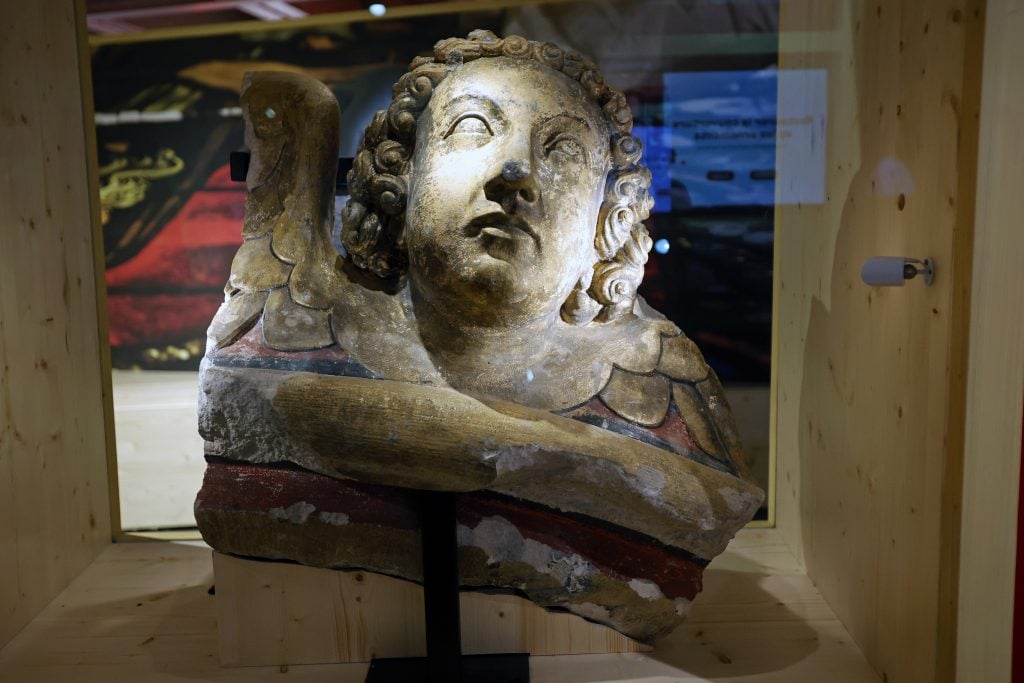
A polychrome angel’s head from Notre Dame cathedral on view in “Notre Dame de Paris: at the heart of the construction site,” a new underground exhibition in the forecourt of the cathedral. Photo by Thierry Chesnot/Getty Images.
Initially, Macron had proposed an international competition to redesign the 315-foot-tall spire with “a contemporary architectural gesture.” The idea sparked some intriguing ideas, but also controversial, and ultimately scrapped.
A team of 1,000 people are currently at work on the cathedral, using period-appropriate materials and techniques to faithfully rebuild the structure. That includes a stone vaulted ceiling—not modern-day concrete—and the wooden timbers of “The Forest,” as the attic is known, which is being reconstructed from 1,000 150-year-old trees.
Follow Artnet News on Facebook:
Want to stay ahead of the art world? Subscribe to our newsletter to get the breaking news, eye-opening interviews, and incisive critical takes that drive the conversation forward.
